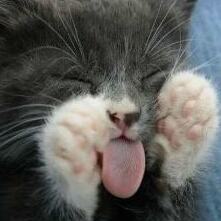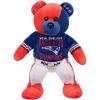Offense- Power-I and Wishbone

Power-I
All modern pro, college and even high school teams have special sets for special situations. One of the most common of those special situations is short yardage. Sometimes the short yards are hardest to get in goal line and 3rd and short situations. The defense, specifically in goal line situations have less depth to defend. They can ignore medium and long passes and usually add defensive linemen and/or linebackers to beef up their run defense.
This specific short yardage package is called the "power-I". It uses two tight ends and sometimes the WR is actually another tight end lined up as a flanker to lead a sweep.
Short yardage sets are designed to overload a specific part of the offensive line with more blockers than potential tacklers. Sometimes misdirection and deception are employed to send defenders the wrong way. It is possible to pass out of this formation. The Tight Ends are still eligible receivers and often score in goal line situations on short slant or down and out routes.
Wish bone
The wishbone offense was developed by Emory Bellard at Texas A&M and Bear Bryant of Alabama in the sixties and seventies. It is primarily a running offense that is designed to get about 4 yards a play and maintain ball control. The Wishbone is not widely used today because it is particularly hard on quarterbacks.
The biggest play out of the wishbone is the triple-option. The triple option is run either to the right or left and gives the QB three things to do with the ball. If the onside tackle has made a big hole, you hand off to the fullback to run off tackle. If the QB isn't well covered, he may opt to run the ball himself. If the QB is covered, he pitches out to the trailing halfback who has a lead block from the other half back. It puts a lot of pressure of defenses to cover all the options and typically what happens is that a wishbone team moves down field in chunks of 3-7 yards. It's not as exciting to watch as todays high powered passing offenses but it is highly efficient in getting first downs and maintaining time of possession.
I mention the triple-option because play options are a key to modern offenses regardless of whether they be run-run, run-pass or pass-checkoff.
The option isn't the only play that you can run out of the wishbone. It also has a rich variety of sweeps, traps and even passes. Indeed the pounding of the wishbone runs often works particularly well to sets up a pass.
You may occasionally see the wishbone used today in short yardage situations in pro games or as a way to burn up the clock late in college games.
I mention it here as it shows how offensive sets have developed over the years and introduce the concept of designed play options and the difficulties they pose to defenders.




0 Comments
Recommended Comments
There are no comments to display.
Create an account or sign in to comment
You need to be a member in order to leave a comment
Create an account
Sign up for a new account in our community. It's easy!
Register a new accountSign in
Already have an account? Sign in here.
Sign In Now